Our first order of business in Gondar, Ethiopia, was to organize a trekking expedition into the nearby Simien National Park. This took the better part of a day as we had to speak with at least 5 or 6 different guides of varying authenticity. Gondar is full of would-be guides who all want to escort us into the mountains, without any proper gear or planning. Actually Gondar is full of touts who in general provide an unwanted reception committee wherever we go:
Tout (racing over from across the road, 5 friends in tow): “Hey, Faranji (foreigner)! Welcome to Gondar.”
Us (in chorus): “Thank you.”
Tout (sizing Oyv up, squeezing his bicep): “I like your posture. You need bus? Where are you go?”
Sar (testily): “We just got here. You saw us get off that bus.”
Tout: “You need Hotel?”
Oyv (patiently): “No, we have one in mind.”
Tout (shaking head regretfully): “It burned down.”
Sar (through gritted teeth): “Go away.”
Tout (mournfully, with deeply wounded expression): “But I have a nice hotel, you come look? Looking is free.”
Sar: (screams wordlessly and storms off)
Anyway, we asked around and although our first quote was for 700 USD per person for a 3 day and 2 night trek, we eventually ended up agreeing on a more reasonable 180 each.
And so we trekked into Simien National Park the next day with some other travelers, a local guide, an armed scout, two cooks, two mules carrying all our gear, and a mule man.
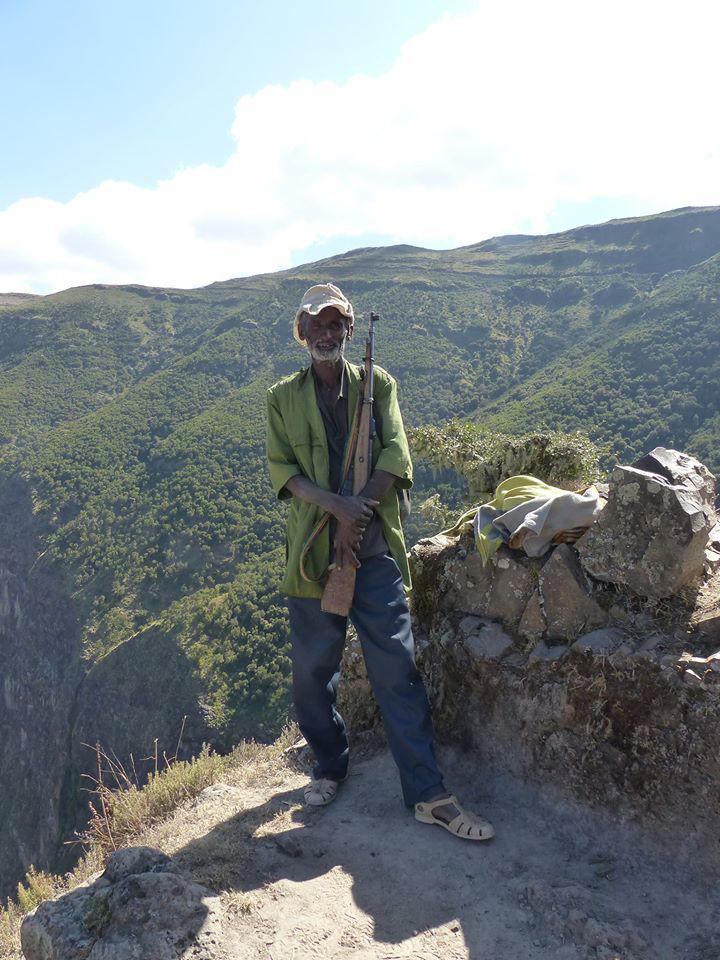
The park is 400 km/sq of mountains and home to about 7000 people in small scattered villages, bushbuck, wolves, endemic bird life and racist baboons. According to our guide, the baboons apparently only like white people.
We could get as close as we wanted to huge groups of them, but they run fast from locals who have a long history of throwing stones at them.
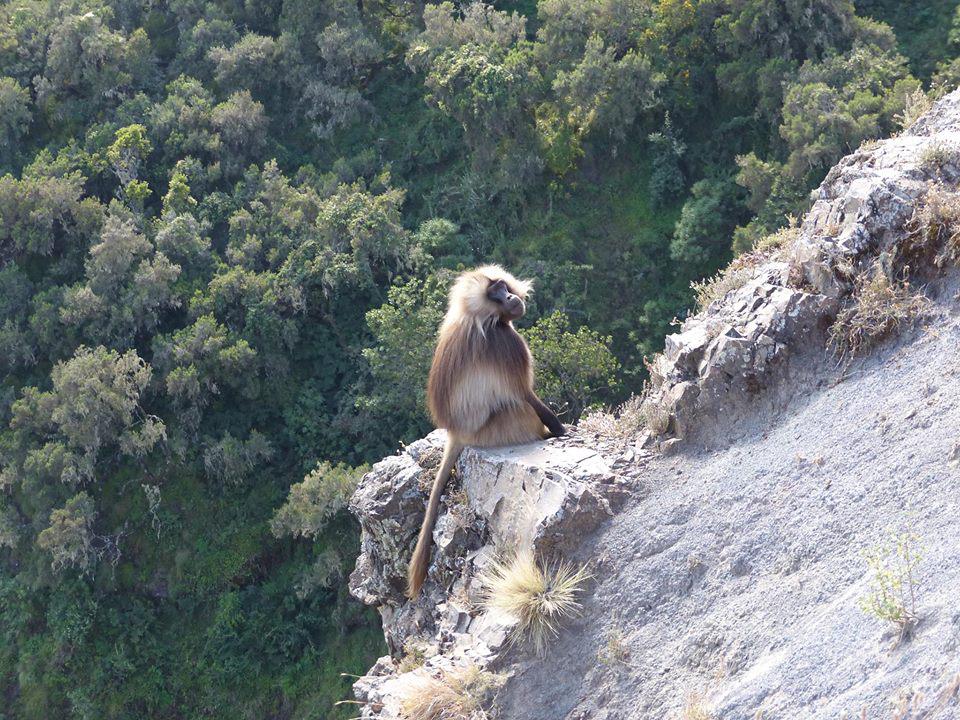
I was horrified to find myself huffing and puffing at first. Then I remembered the altitude: Gondar lies at 2400 m above sea level. We started our trek at 3100 m and climbed from there.
We camped in the park for two nights; at 3260 m the first night and 3600 m the second. It was pretty cold up there – we woke up to ice on the tent.
And then our luck ran out: something or other Oyv ate along the way disagreed with him and he spent the first night crawling in and out of the tent to throw up. He was a champ in the morning though and carried on, even refusing to ride the mule. He only stopped once to throw up on the path.
The third day we climbed to one of the peaks, at 3926 m. What a view! They call this park the Roof of Africa, because it contains the highest peaks on the continent, after Kilimanjaro.
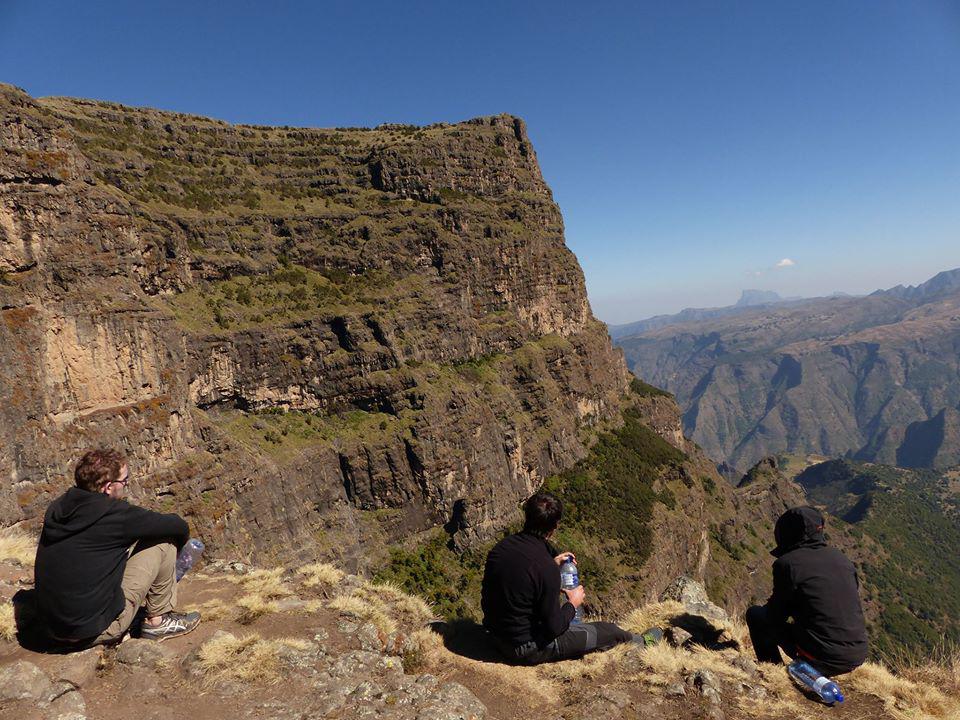
Coffee is a big thing in Ethiopia. We stopped in a small village in the park for some in a family’s home. A family of 6 live in this circular mud hut, with a fireplace in the floor. There’s no vent, smoke just trickles out the cracks between twigs and branches in the walls. The whole family sleeps on a wooden platform which was also the only piece of furniture.
The mother made coffee: first she washed the beans in a skillet, then roasted them. Then she smashed them in a mortar and pestle and eventually boiled the coffee on the fire. She poured the coffee into our small cups, in three rounds, reboiling the grounds in between. Her 4 year old son happily participated in all three rounds. He took at least a tablespoon of sugar in his coffee.
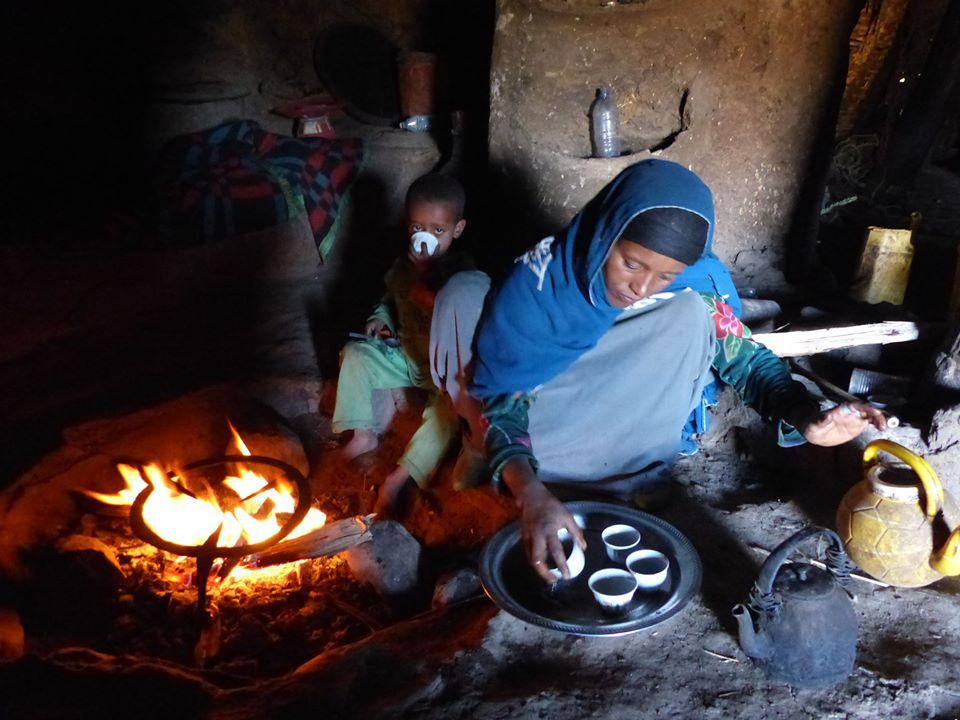
Since returning from the mountains we’ve travelled slowly but steadily south in Ethiopia, stopping in Bahir Dar and Lalibela on our way towards Addis Ababa, the capital.
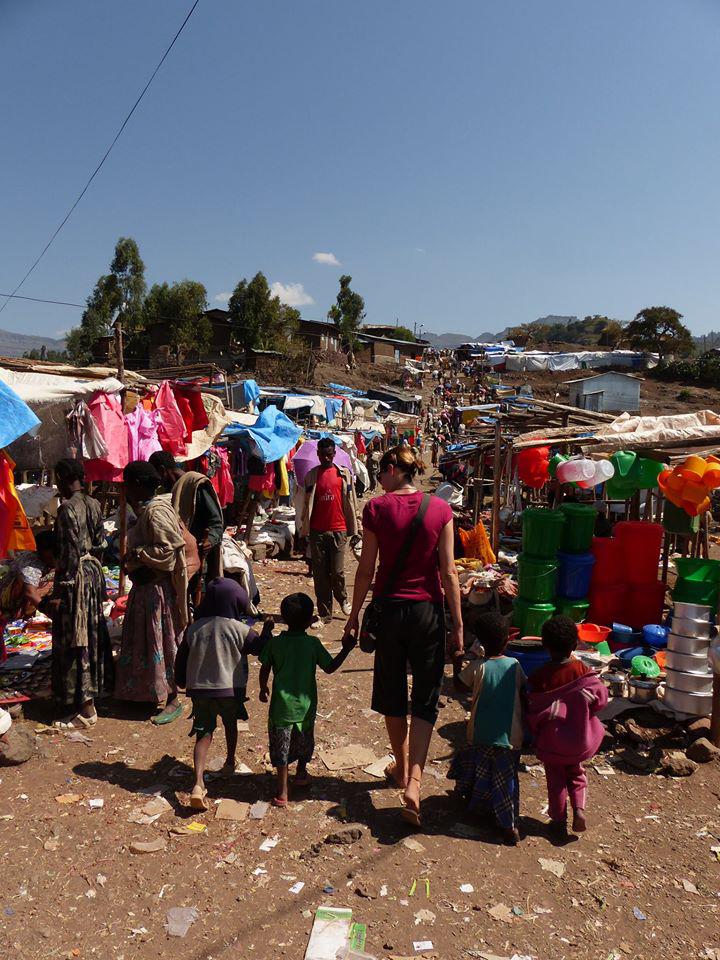
Other than the occasional muslim village the north of Ethiopia is predominantly Orthodox Christian. Lalibela, a remote town in the mountains, is one place where the roots of this religion are highly visible.
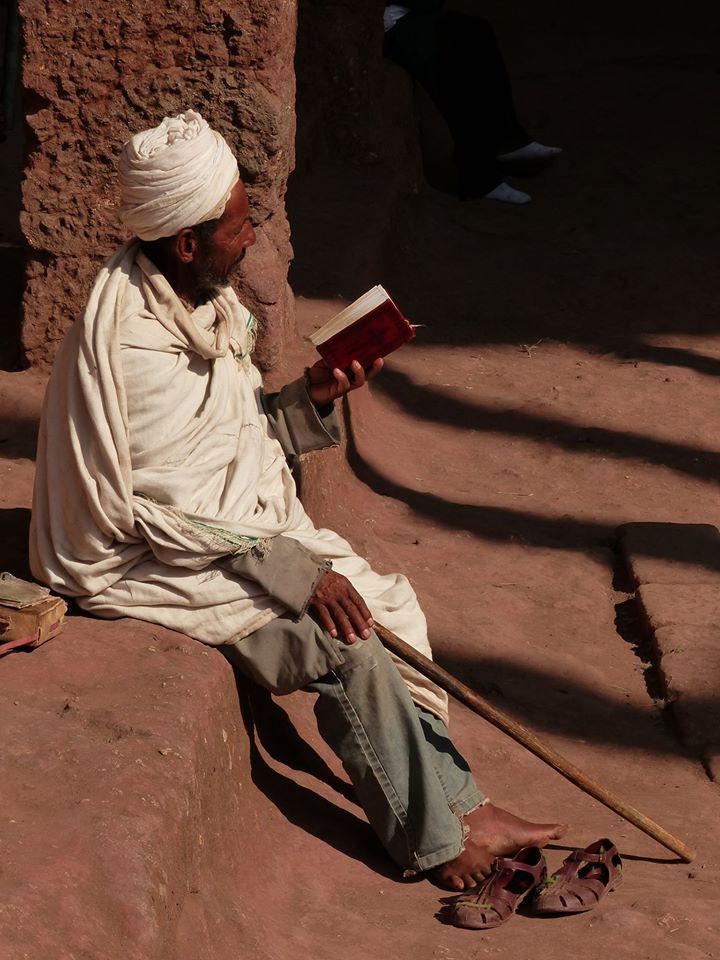
This small but famous town takes its name from the King who excavated at least 11 churches out of solid rock over a span of 23 years during his reign around 1200 AD. The most famous is this one, dedicated to Saint George:
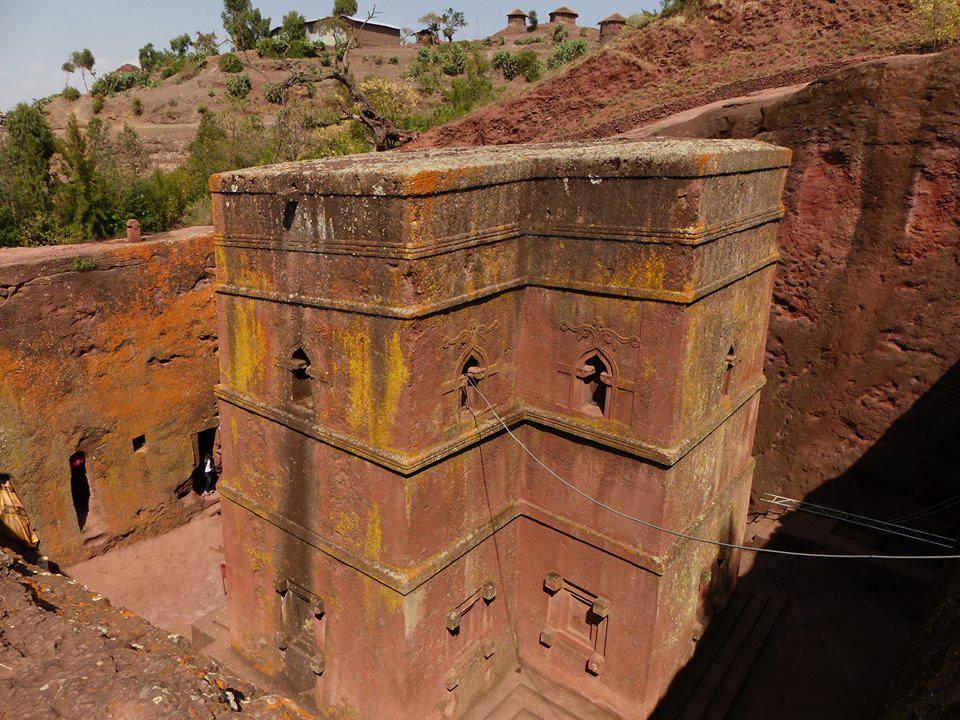
The churches altogether form a huge complex connected by underground tunnels and narrow passageways.
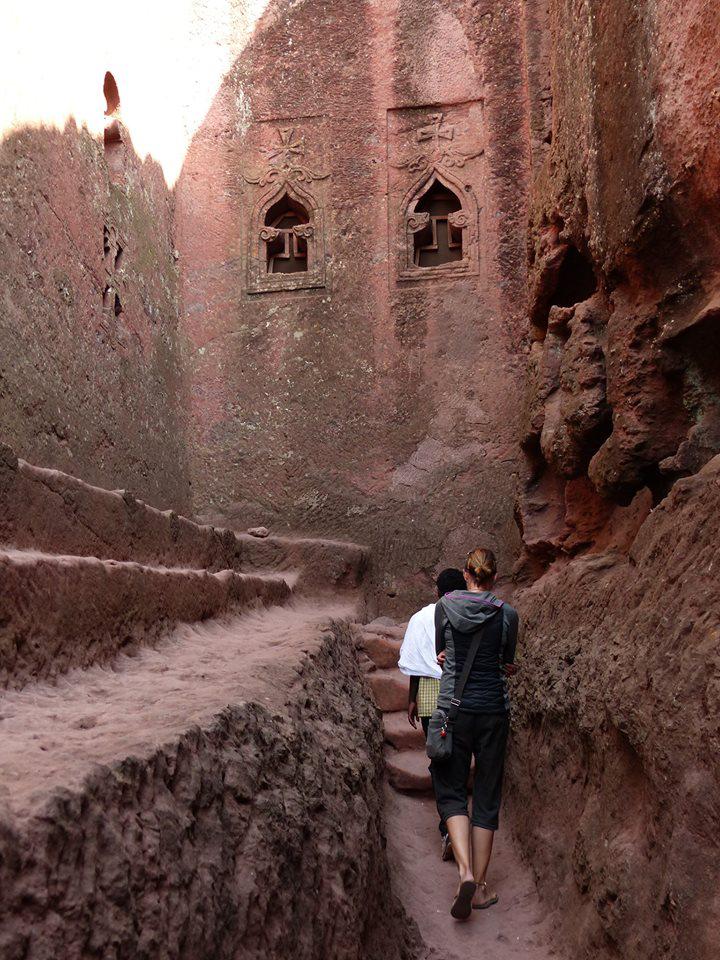
There are two theories regarding their construction. Ethiopians like to believe the churches were miraculously scooped out of the rock by angels. The rest of us are under the impression that the work was carried out by around 40 000 slaves.
Each church contains a curtained-off Holy of Holies, like King Solomon’s temple in ancient Jerusalem. One of the reasons King Lalibela carved these churches out of the countryside was to give his people a pilgrimage site a bit closer than the long trek to the Holy Land. A replica Ark of the Covenant resides behind the curtain in each church, hidden from the sight of everyone but the priests.
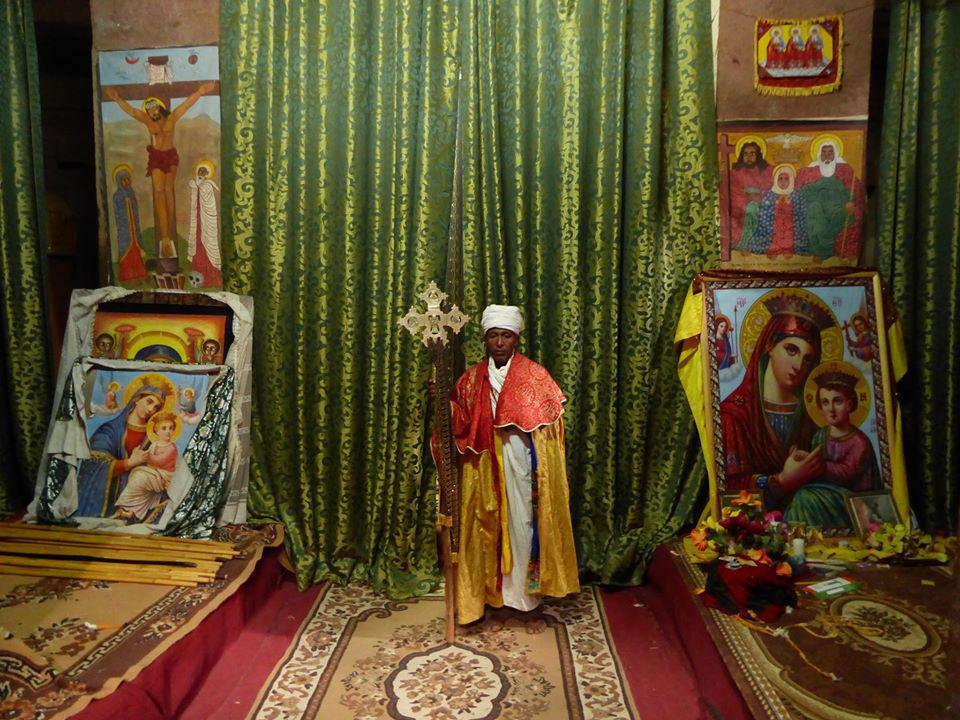
It is said that the real Ark is not lost at all – it’s in a church in Axum, up north – but no one is allowed to see it. Only two people have allegedly laid eyes on it in the last 200 years or so.
And that is the Ethiopia of long ago.
Today, Ethiopia is one of the economically fastest growing countries in Africa, though still one of the very poorest. Drought leading to famine in parts of the country is a real threat. Not very long ago at all, life expectancy was as low as 45 years (although now it has climbed to around 60) due to any number of factors including poor healthcare and high HIV infection rates. But health care is improving and becoming widely available even in remote areas, and school is both free and compulsory.
If you’ll excuse this overused cliche – Ethiopia really is a ‘land of contrasts.’
In the capital city Addis Ababa, street side shoe-shiners offer to clean our trainers or sandals on the pavement; a 30-something professional walks by, dressed exactly as I would be back home, in skinny trousers, flats and a scarf, clutching her designer purse. A beggar displays the stump of his missing leg outside of a shop selling overpriced goatskin bags and other souvenirs. A brand new tram glides silently between glistening skyscrapers going up fast on one side, and a slum constructed of tin and cardboard on the other. Some men kick a suspected thief in the stomach and face right in front of us; a pedestrian steps into the busy street and holds traffic for us to cross. To the casual observer, drinking a macchiato and watching from the coffee stall – even the simplest of every day activities seems plagued by unbelievable disorder.
At the same time, Ethiopia offers the traveler some of the richest cultural heritage on this continent. It’s the one country in Africa which emerged uncolonised from the 19th century ‘Scramble for Africa’ and still today it’s independent, unique and proud. Besides this, the natural beauty of this country is astonishing.
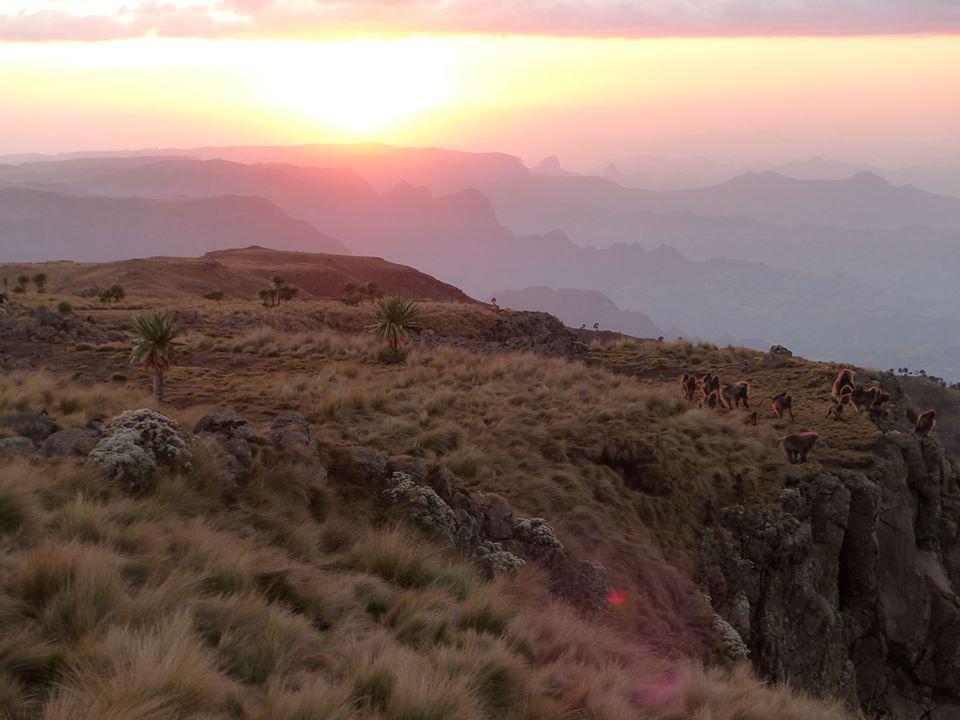
A few days ago, we caught the eye of a fellow passenger fighting to keep his footing in a surging crowd of people all trying to board the bus simultaneously. He must have read our minds. Sandwiched between a sweaty shepherd and a nun with a tattooed-on beard, he shrugged, grinned, and said ‘T.I.A. You know: This is Africa.’
Read More
For more of our adventures (and misadventures) in Ethiopia, check out the rest of my stories from the road.



